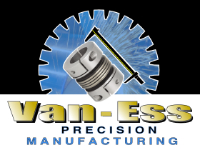
 What are the Specific Regulatory Requirements that Need to be Met When Manufacturing Parts for Medical Applications?
What are the Specific Regulatory Requirements that Need to be Met When Manufacturing Parts for Medical Applications?
Manufacturing parts for medical applications involves strict regulatory requirements to ensure patient safety and product efficacy. The specific regulatory landscape may vary across countries and regions, but several key requirements are generally applicable:
A. Medical Device Regulations: Compliance with medical device regulations is essential. In the United States, the Food and Drug Administration (FDA) regulates medical devices under the Federal Food, Drug, and Cosmetic Act. In the European Union, the Medical Device Regulation (MDR) establishes requirements for medical devices.
B. Quality Management Systems: Implementing a robust quality management system is crucial. The ISO 13485 standard provides guidelines for the design, development, production, and distribution of medical devices. Compliance with ISO 9001 for general quality management is also commonly required.
C. Design Controls: Medical device manufacturers must establish and follow design control processes. This includes conducting risk assessments, documenting design inputs and outputs, verifying and validating designs, and maintaining design history files.
D. Risk Management: Manufacturers need to implement risk management processes to identify, assess, and mitigate risks associated with their medical devices. The ISO 14971 standard provides a framework for risk management in medical devices.
E. Material and Biocompatibility: Medical device materials must meet specific biocompatibility requirements to ensure they are compatible with human tissues and fluids. Testing, such as cytotoxicity, sensitization, and irritation, is typically required to assess biocompatibility.
F. Labeling and Packaging: Proper labeling and packaging of medical devices are critical for identification, traceability, and user safety. Requirements include accurate device information, usage instructions, warning labels, and sterile packaging where applicable.
G. Post-Market Surveillance: Manufacturers must establish post-market surveillance systems to monitor and report adverse events, conduct post-market clinical follow-up, and ensure ongoing safety and performance evaluation of medical devices.
Compliance with these regulatory requirements necessitates thorough documentation, rigorous testing, traceability, and adherence to quality management systems. Engaging with regulatory experts and maintaining awareness of evolving regulations is crucial for successful manufacturing of medical device parts.

